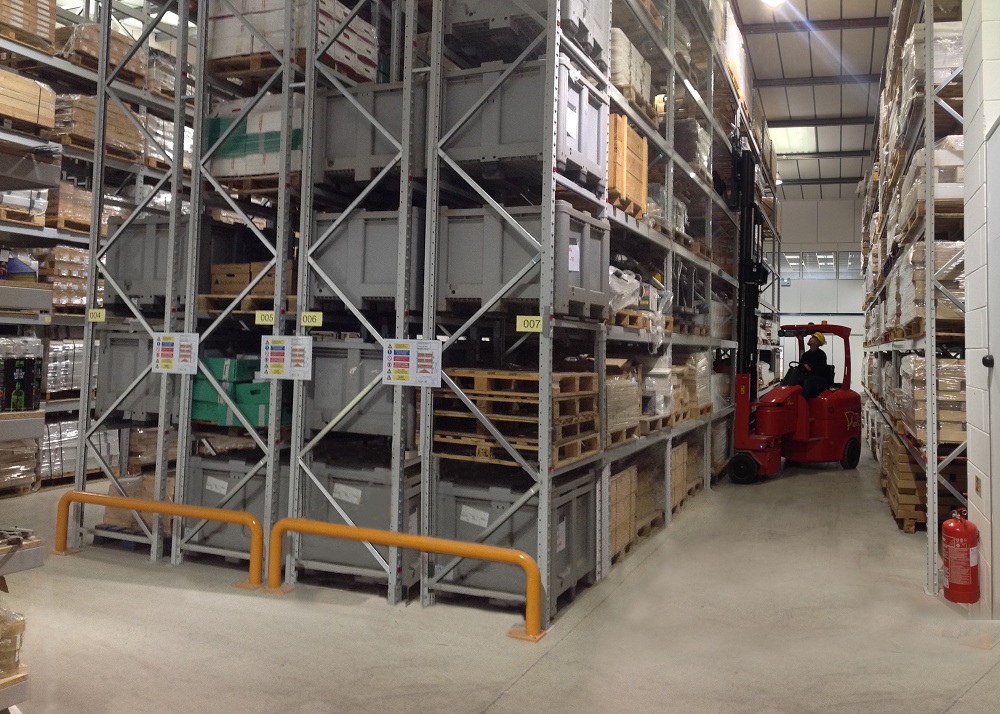Save cost max out the cube!
15th July 2015

Flexi Warehouse Systems the intralogistics projects and systems division of the articulated forklift truck specialists, Narrow Aisle Ltd has introduced the Flexi CubeMAX, a new concept in space saving storage solutions.
Based around established double deep pallet racking, Flexi VNA truck and warehouse management systems technology, the CubeMAX storage solution allows 50 per cent more pallet locations to be achieved when designing a storage system in a warehouse with the same dimensions as a system served by conventional reach trucks.
Furthermore, CubeMAX pilot schemes undertaken in Italy and the UK have shown that the high-density system requires significantly fewer truck assets to achieve higher pallet throughput speeds than storage solutions that feature, say, automated pallet Shuttle technology. And, of course, with the CubeMAX system, the user does not have to invest in the kind of costly special pallet racks and automated components associated with Shuttle pallet storage systems.
In simple terms, CubeMAX allows users to handle two pallets from the same side of each very narrow aisle – which effectively doubles the capacity of each run of racking.
The pallets are put-away and retrieved by Flexi CubeMAX with hydraulic forks that reach twice as deep within the racking as those on a conventional truck.
The Flexis design which, being counterbalanced, provides an exceptionally stable lifting base, also features a patented Stability Control System (SCS) which controls costly pallet weight derations when lifting at height.
Overcoming historical issues
One of the major drawbacks associated with two deep pallet storage systems in the past has been the poor residual capacity of converted reach type trucks at high lift heights. Now, the Flexis ability to handle standard supply chain loads at top beam level means that the problem of product weight control by location, sometimes known as zoning, which has been associated with double-deep storage systems in the past has been overcome.
The CubeMAX uses WMS software that can track and locate every pallet of product in a modern warehouse, but the software has been adapted to ensure that honeycombing is also eliminated.
Honeycombing is the effect on the storage cube when the back pallet locations towards the top of the storage system are under-utilized because of problems encountered by the materials handling equipment usually reach trucks when products are put away into the rack storage system in the wrong order, ie, not obeying important date (first-in, first-out) data or customer order data before allocating rack locations.
The CubeMAXs warehouse management system ensures that pallets are put away in the order from which they will be picked. In other words, the WMS places incoming pallets that will be kept in storage for a shorter time, in front of products that will normally be in stock longer to allow fast access from the aisle for the faster moving stock units (skus).
To further enhance safety and efficiency when picking at height, the Flexi trucks that operate within the CubeMAX system are fitted with a hi-definition operator CCTV system.
Early adopters of CubeMAX technology have experienced impressive results. For example, one user a well-known food manufacturer – is storing 40,000 pallets in a CubeMAX system that is served by just five Flexi trucks.
The company chose to invest in CubeMAX technology in an effort to improve its costs per pallet stored and lower its handling expenses after an automated Shuttle-based system in operation at another of its European sites had proved less than efficient. The Shuttles relatively low pallet throughput – which was due to extended internal pallet transfer speeds and, therefore, long waiting times – meant that up to 50 per cent more reach trucks were required to operate at the installation than originally forecast.
John Maguire, sales and marketing director of Flexi Narrow Aisle, comments: The CubeMAX system allows the same number of pallet locations to be achieved in the identical storage space as an automated shuttle based system only more efficiently and with less labour costs.

